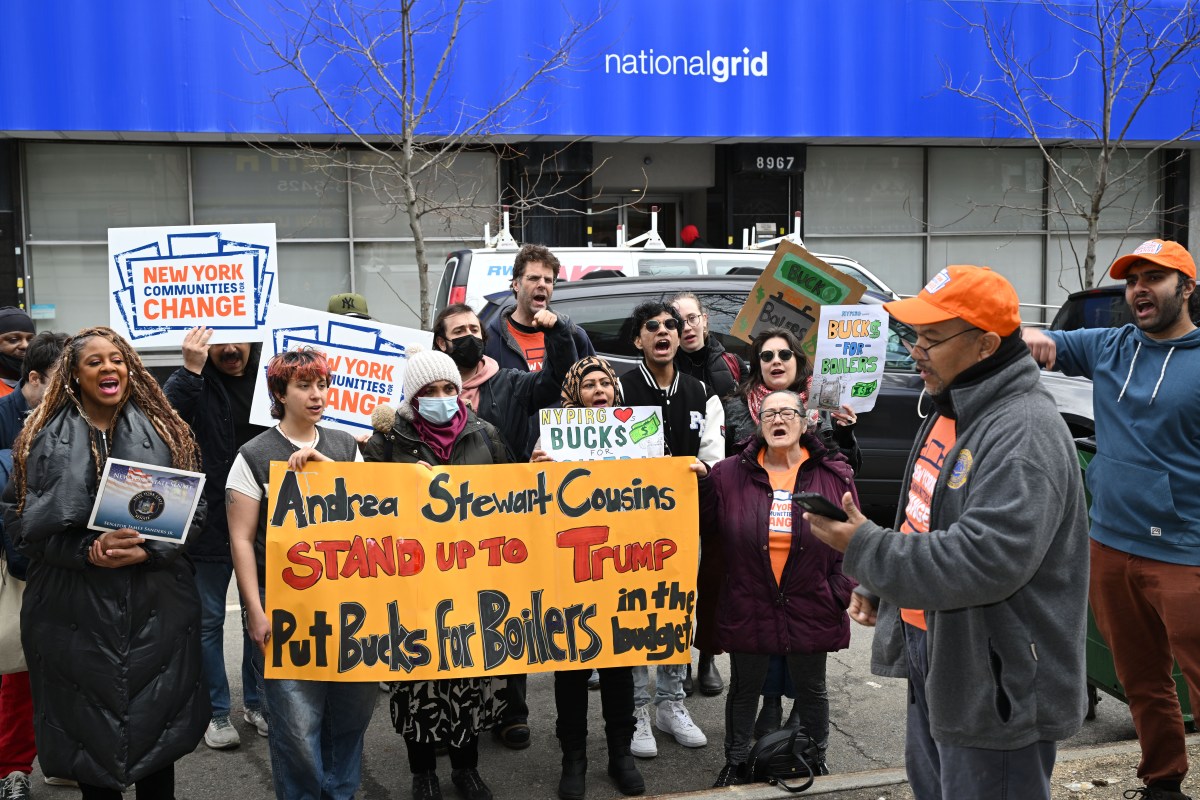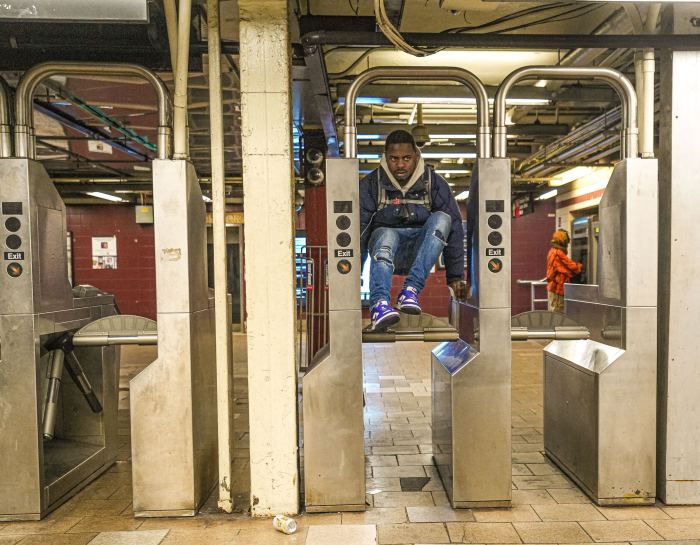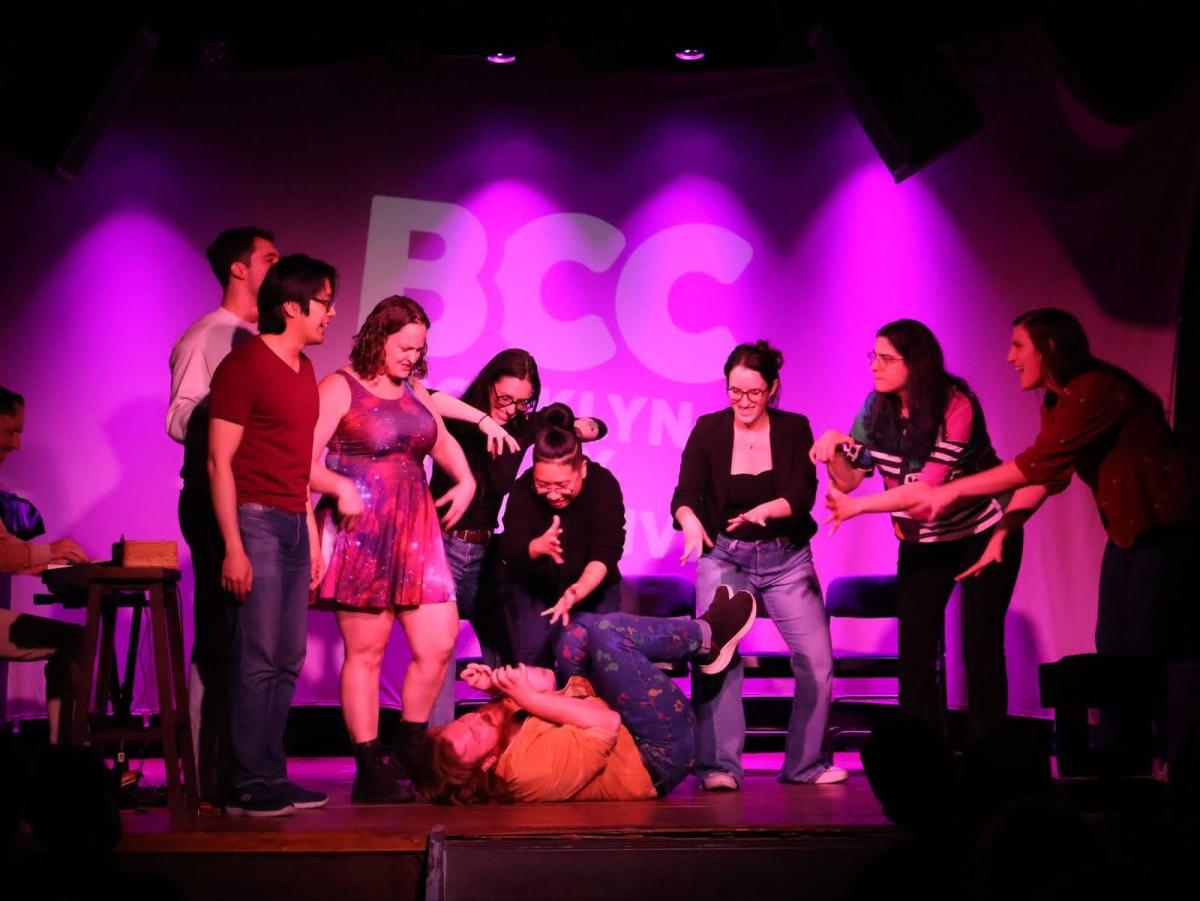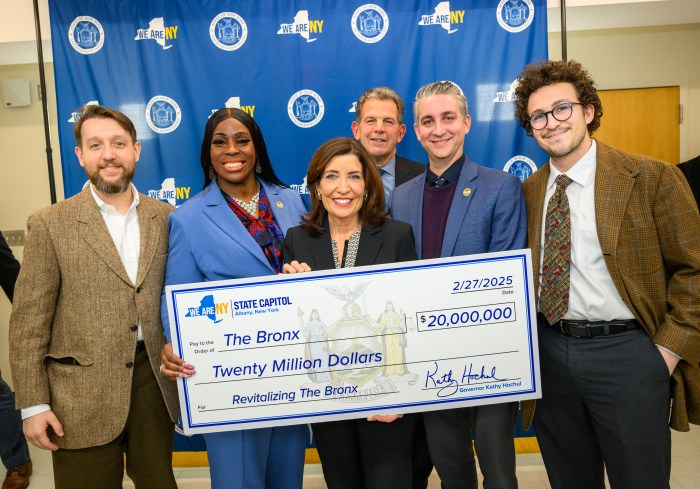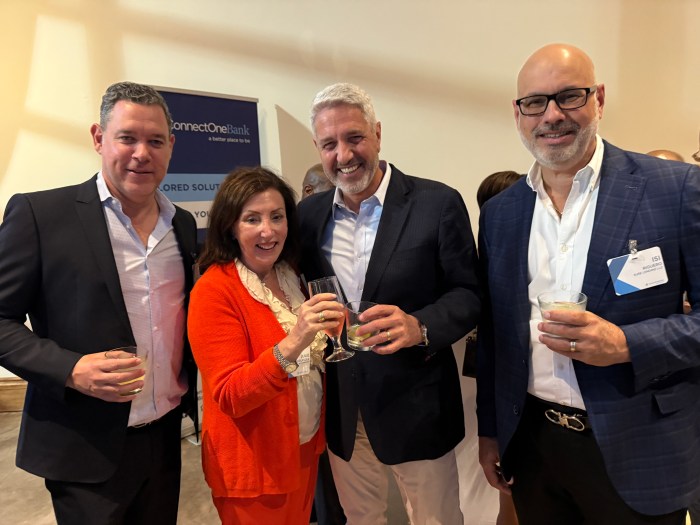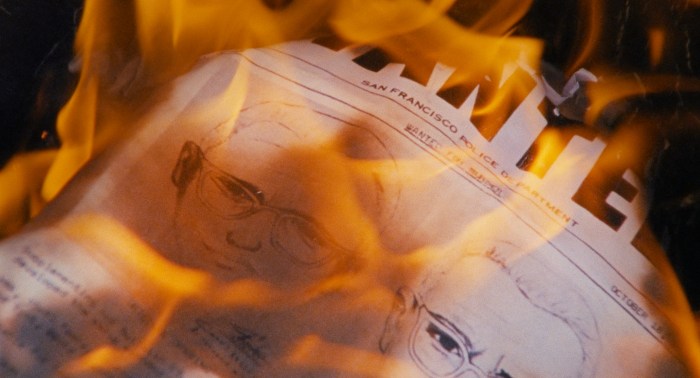
Steps away from Grand Central Terminal, a pedestrian plaza has pledged to draw passers-by with a selection of notable sculptures — at least on paper.
Per an agreement between the city and the firm that developed 120 Park Ave., the tower’s ground floor must be open to the public during the day and display sculptures from the Whitney Museum of Modern Art. For several years, however, the privately owned public space — typically referred to as a POPS — has included nothing but chairs, tables and greenery.
The current owner of the tower, Global Holdings Management, said it has been discussing the deal with the city Planning Department, but has been unable to reach a resolution since the Whitney Museum of American Art withdrew from the plaza a decade ago, according to a recording of an administrative hearing last year. But community activists argue the void is emblematic of many landlords’ approach to POPS, which typically allow developers and owners to bulk up the size of their buildings.
“They basically have to hold their end of the bargain,” said Layla Law-Gisiko, the acting chair of the land use committee for the local community board. “It’s not like we can knock down some floors of their building.”

In all, 120 Park Ave. includes about 62,000 square feet that would not have been allowed without the public art provision. In 1983, the Phillip-Morris Company built the 26-story tower and partnered with the Whitney to create a Midtown branch containing “an indoor gallery of 20th Century American sculpture, rotating exhibitions, and other art programs,” according to planning documents.
In 2007, Phillip-Morris sold the building to Global Holdings Management. A year later the Whitney announced it was closing its outpost in the building’s plaza.
Yet, the planning resolution requiring sculptures at the POPS has not been modified, according to the city Planning Department.
In November 2017, building inspectors issued a $4,000 violation to Global Holdings Management for not including enough trees or showcasing sculptures at the POPS, according to a department spokesman.
The fine was dismissed by the city Office of Administrative Trials and Hearings in June, after Global Holding Management’s attorney, Melanie Meyers, said it was working with the city Planning Department to come up with an alternative plan for the plaza, according to a recording of the hearing obtained through a Freedom of Information Law request. Meyers said they were exploring adding a video art screen, according to the audio clip.
“We cannot make those changes until we get city planning’s approval,” Meyers said, according to the audio clip.
However, the city Planning Department said Friday that it had not yet received any applications to modify the POPS from Global Holdings Management.
The firm did not respond to requests for comment.
Global Holdings Management should have been able to come up with a remedy in the decade since the Whitney abandoned the plaza, according to Law-Gisiko.
“These [resolutions] are supposed to be in perpetuity,” Law-Gisiko said. “It makes it harder because the public doesn’t know they’re supposed to be there.”
Elizabeth Goldstein, the president of the Municipal Arts Society, said poor enforcement of POPS is too common.
“It shouldn’t be too hard to go and make the request to change the POPS requirements to fit their needs. The owners just don’t do it,” Goldstein said.
While she did commend City Planning for its increased efforts to crack down on POPS violations, Goldstein said violations still abound. She said educating the public about POPS rules, which are explained on the Municipal Art Society’s website, should help.
“Most of these places are being used by people to sit down and grab their lunch. Not a lot of them are saying, ‘Hmm, there used to be sculptures here. Something’s up,’ ” Goldstein said.



